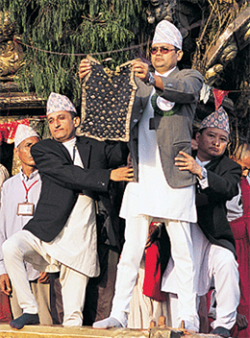Since the beginning of May there has been a large chariot roaming around our home town in Lalitpur (Patan). It is a huge chariot built 60ft high consisting of red colours which represent the deity Machhendranath’s colours (rato meaning red). The festival is also known as Bunga Dyah Jatra and is climaxed by Bhoto Jatra, the showing of a sacred vest. It is celebrated by both Nepali Hindus and Buddhists alike.
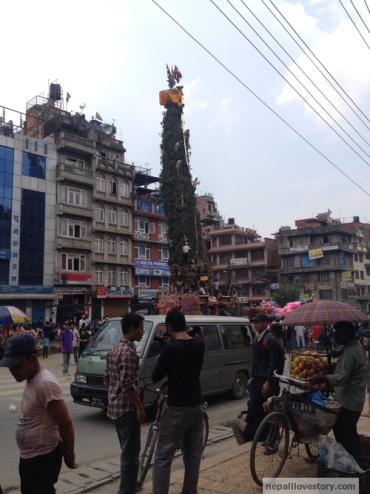
The second day of the chariot, my second day in Nepal.
Ever year, the large chariot is pulled by a mixture of the Army and local Nepalis to various towns around Lalitpur. In total it takes about a month until the chariot reaches its final destination in Jawalakhel where the vest is shown. People come on this last day especially to see the vest and pay their respects to Machhendranath, who is the deity of the rain powers. It is an age long tradition that if the chariot festival takes place then Machhendranath will endow Nepal’s hot dusty season with a sought after abundant monsoon.
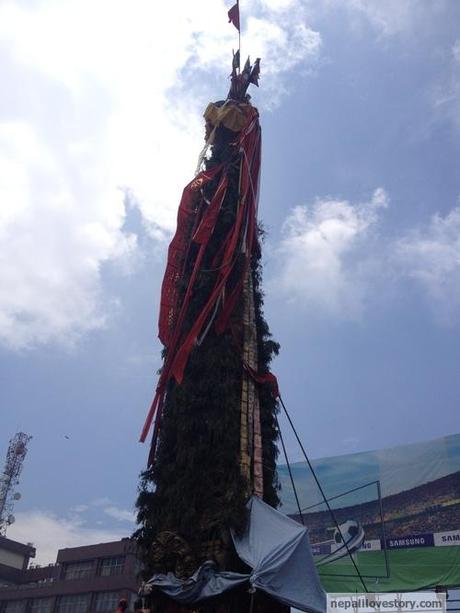
The chariot in it’s final place, Jawalakhel.
Alongside the chariot, a smaller version is moved which encompasses Jatadhari Lokesvara, also known as Minnath, who is said to be a form of Avalokitesvara. Buddhists believe Avalokitesevara is a supreme being and the deity’s name is translated as ‘the one who looks down on the world’. Although Buddhists do not believe in an a God per say they believe that Avalokitesvara is the almighty of compassion.
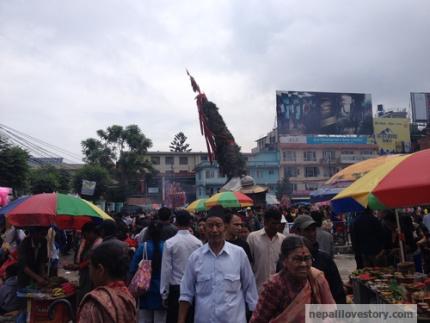
The small chariot standing opposite main chariot.
For the Bhoto Jatra vest showing to take place, Astrologers will predict the day it must be held on. This year, the Bhoto Jatra was on the 22 of June, as it is near our house we visited on the morning and touched the chariot to pay our respects. M and I also came back later that day to see the vest being shown. By that time the crowd had trebled in size and there were human chains, swarms of police and Army human walls with riot shields in place.
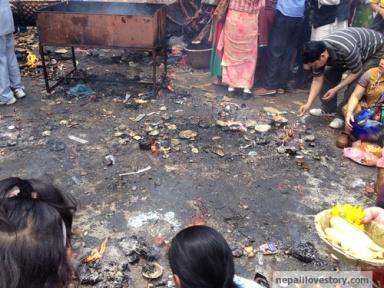
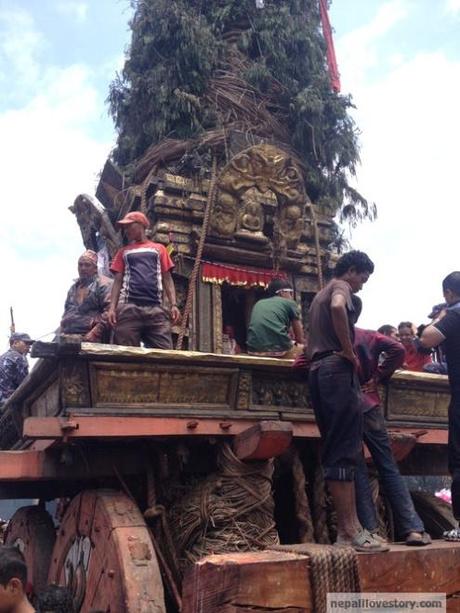
The main chariot
There are a few legends as to how the showing of the vest became a tradition. The main legend states that their was a disagreement as to who the vest actually belonged to between two men. Rato Machhendranath came before the men and gave them a challenge to see who the vest belonged to. He told the men to swim into the river and whoever came back to the land first would keep the vest. However, as soon as the men got into the water, Rato Machhendranath took the vest and kept it until its real owner came forward. In accordance with the legend, to this day the vest is still shown on each four sides of the chariot three times waiting for the owner to provide evidence and reclaim the vest as their own.
On the important day of Bhato Jatra, the president, prime minister and many important government officials arrive escorted by police cards and bikes. Nepal’s living goddess, the Kumari, also joins the important people in watching the vest being shown. The ordeal is over fairly quickly once everyone has arrived. The national anthem is played, then puja takes place. A government official climbed up a little to collect the vest and then stood on the edge of the chariot in order for the crowds to get a glimpse of the outline of the small black vest.
